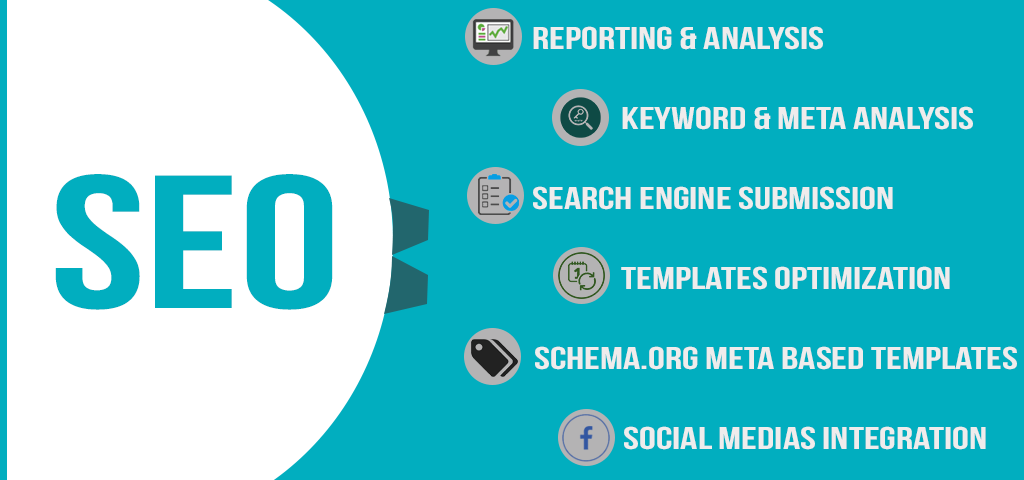What Does "A Beginner's Guide to SEO: Getting Started with Search Engine Optimization" Do?

SEO vs SEM: Understanding the Difference and Taking full advantage of Their Perks
In today's electronic age, businesses are considerably counting on online marketing strategies to hit their target target market and steer traffic to their websites. Two preferred techniques for attaining these objectives are SEO (Search Engine Optimization) and SEM (Search Engine Marketing). While both target to increase exposure in hunt engine end result, there are actually essential differences between the two strategy. In this write-up, we will definitely check out the distinctions between SEO and SEM, as well as give knowledge on how businesses may optimize the benefits of each strategy.
What is SEO?
SEO recommends to the practice of improving a website's content, framework, and general performance along with the goal of strengthening its all natural hunt rankings. Legiit Leads are those that show up naturally located on their significance to a consumer's question. By executing various procedures such as key phrase research, on-page optimization, web link frame, and technical marketing, organizations can raise their possibilities of ranking much higher in search engine outcome web pages (SERPs).
The principal perk of SEO is that it creates natural visitor traffic without directly spending for add placements. However, it demands opportunity and initiative to view notable outcome since hunt motors analyze websites based on many elements just before identifying their rankings. Regardless, investing in SEO may lead to long-term advantages through establishing a sturdy on the internet visibility and drawing in premium all natural website traffic.
What is SEM?
SEM incorporates various paid out marketing techniques made use of to boost a website's presence in hunt engine results. Unlike SEO which centers on all natural strategies, SEM leverages spent advertising campaigns with platforms like Google Ads or Bing Ads. These ads normally appear at the best or bottom of SERPs with an "Add" tag.
One popular type of SEM is Pay-Per-Click (PPC) advertising and marketing where advertisers pay out each time a individual clicks on their add. The cost every click on depends on elements such as keyword competitiveness and quote strategies. Other forms feature display screen advertising and marketing (advertisement adds), remarketing projects targeting individuals who have earlier saw the website, and shopping ads including item info.
One of the perks of SEM is its capability to give prompt end result. Organizations can easily quickly increase their on the internet visibility and drive visitor traffic to their websites through bidding on applicable search phrases and targeting particular demographics. However, it calls for continuous financial investment to preserve add campaigns and preserve traffic amounts.
Understanding the Distinctions
Right now that we have described SEO and SEM, permit's delve in to the essential distinctions between the two technique.
1. Cost: As mentioned previously, SEO concentrates on organic procedures and does not include straight payments for add positionings. On the other palm, SEM calls for businesses to allot a finances for paid advertising and marketing campaigns.
2. Timeframe: SEO is a long-term tactic that calls for persistence as it takes opportunity for hunt motors to realize optimizations and enhance natural rankings. In contrast, SEM provides instant outcome once campaigns are specified up and running.
3. Click-through prices: Researches have shown that natural search results acquire additional clicks than paid for adds. Users often tend to trust natural listings extra since they perceive them as impartial referrals coming from hunt motors.
4. Management: With SEM, organizations possess even more control over their advertisement material, targeting possibilities, spending plan appropriation, and initiative environments reviewed to SEO where hunt motors ultimately calculate rankings located on algorithms.
Making best use of Their Benefits
Currently that we comprehend the distinctions between SEO and SEM, let's explain how organizations can easily make best use of their advantages by leveraging each strategies properly:
1. Keyword synergy: Pinpoint high-performing key phrases through research tools like Google Keyword Planner or SEMrush. Incorporate these search phrases right into your website's material for better natural rankings while using them in your PPC projects to enhance visibility in paid hunt outcome.
2. Complete keep track of: Utilize analytics devices such as Google Analytics or Bing Webmaster Tools to observe efficiency metrics for each SEO efforts (organic website traffic) and SEM initiatives (click-through prices, conversions). This information will assist you create informed decisions relating to optimizations or adjustments required in each approach.
3. Remarketing campaigns: Through combining SEO and SEM, you can target individuals who have went to your website but did not change. Applying remarketing campaigns via SEM permits you to stay top-of-mind and promote those consumers to return and accomplish their preferred activities.
4. Continual marketing: Each SEO and SEM require recurring efforts to remain reasonable in hunt motor rankings. On a regular basis analyze functionality record, change search phrase methods, exam add copy variations, and improve landing web pages to make sure superior outcome from both technique.

In verdict, while SEO and SEM discuss the common target of improving website visibility in search engine end result, they employ various procedures and provide unique advantages. By understanding the distinctions between these methods and taking advantage of them in a complementary method, companies can take full advantage of their advantages through steering natural traffic through SEO and obtaining immediate visibility with paid SEM campaigns.
